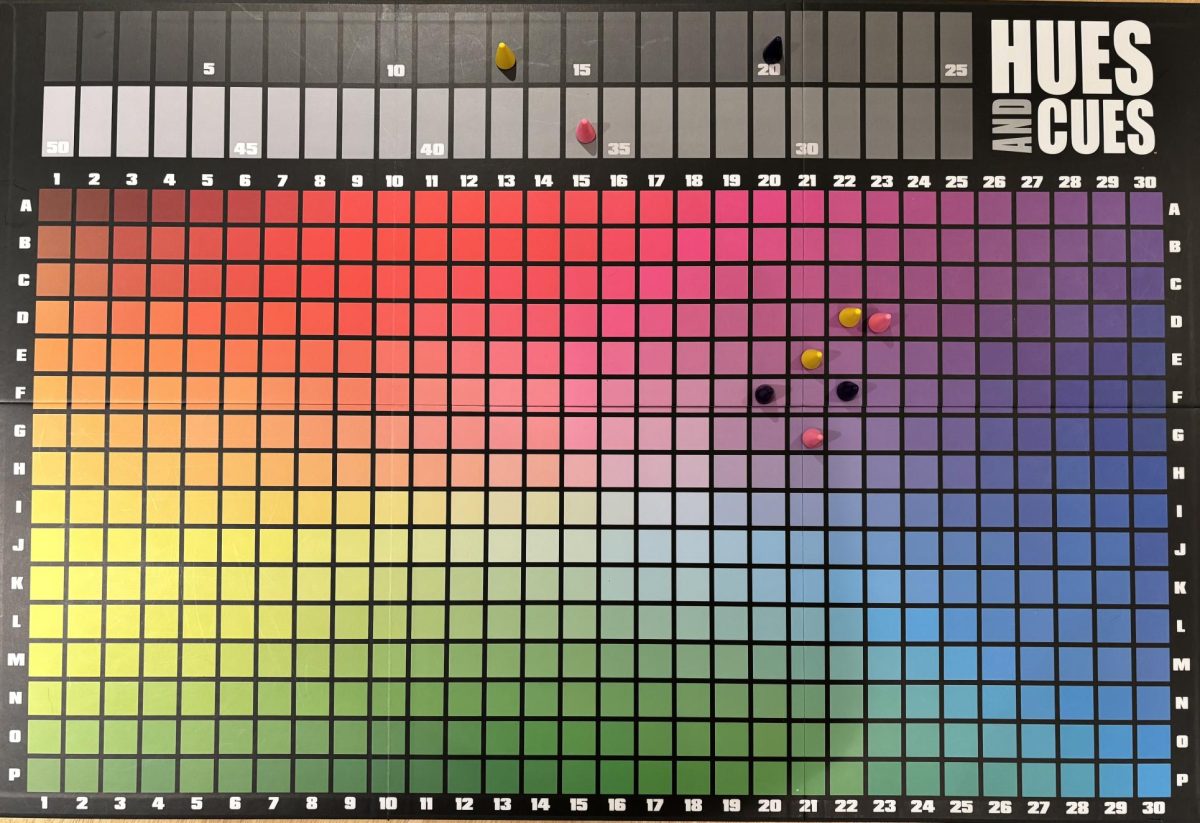It began innocently enough. Four friends gathered around a basement table, eating Hawaiian pizza straight from the box, debating which board game to choose for their monthly no-phones game night. Already having exhausted Cards Against Humanity and torn through a massive pack of Sour Patch Kids, the four turned their attention to a newish game: Hues and Cues.
The rules were simple: one person would draw a card with a specific hue on it. Using first a one-word, then a two-word clue of their own imagination, they would try to get other players to guess which of the 480 colors depicted on a massive board was the secret swatch. The board stretched out in either direction, each colored square appearing only of slightly different shade or tone than the hues surrounding it. Whoever’s guess was closest to the true color would earn the most points.
And so we began to play. While the game seemed low-stakes at first, soon it’s true, insidious nature was revealed.
The problems began with the clues. A shade that one person interpreted as “raw salmon” was described by another player as “creamsicle”; we had particular trouble with the cues “crimson,” “persimmon,” and “key lime,” words which called to mind slightly different shades in each of our heads. Even a minuscule difference between the hidden hue and the color guessed can vastly impact a player’s score that round, and here is when the game turned–dare I say–evil.
Before we continue with our tale, I should introduce my friend. A mild-mannered, bespectacled woman, with an easygoing sense of humor and an ability to stay calm under the pressure, even while facing the daily toils and turmoils of a high school senior’s life. Probably the most even-tempered out of all of us. Or so I thought.
But as the game drew on, her mild, lighthearted demeanor vanished. As the points racked up and the stakes grew higher, the vague clues and frustrating nuances between two conceptions of the same color drove her to a point of near insanity. Staring down at the board of doom, second-guessing the small details about the tint, brightness, and shade of each color, she demonstrated perfectionism unlike that which I had seen since the SATs in junior year. After each guess, she had to be physically restrained from adjusting and readjusting every piece she placed on the board, waffling back and forth between guesses. On her turn, she began making incomprehensible gestures to somehow convey a color that could not be explained in a cue. Peeking under her glasses, negative self-talk and doubt entered her psyche, overcasting the game in a shade of dark gray.
To the makers of Hues and Cues, let it be known that I lost my best friend to your game; a woman who had been sane of mind and body prior to the opening of the box. And to any prospective players out there, take this as your sign that the innocuously artistic pastime your friend is suggesting may be much more serious than a game. You have been warned.



